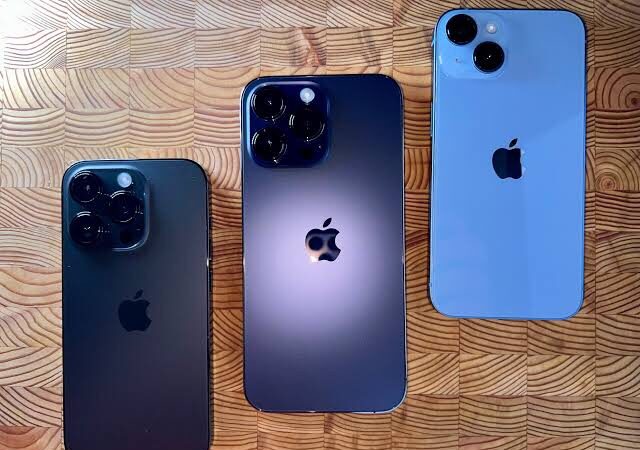
The rapid advancement of technology has empowered our smartphones with remarkable capabilities, transforming them into intelligent devices that extend beyond mere communication tools. Among the impressive features integrated into modern smartphones is the ability to detect crashes and accidents, providing crucial assistance during emergencies. In this article, we delve into the intricacies of iPhone crash detection, unraveling the underlying technology that enables these devices to safeguard our well-being.
Sensors and Algorithms:
To detect crashes accurately, iPhones rely on a combination of sophisticated sensors and intelligent algorithms. These sensors include the accelerometer, gyroscope, and GPS, which work collaboratively to gather crucial data during sudden impacts or accidents. The accelerometer measures changes in velocity, while the gyroscope tracks rotational movements. These sensors provide precise information about the position, orientation, and acceleration of the device.
Advanced algorithms within the iPhone’s operating system interpret the data collected from the sensors. These algorithms employ complex mathematical calculations to analyze the movement patterns, acceleration rates, and other relevant parameters. By comparing the sensor readings against predetermined patterns, the iPhone can identify potential crashes and distinguish them from normal everyday movements.
Impact Recognition:
The key challenge for crash detection algorithms is to differentiate between everyday movements and actual accidents. Apple has employed machine learning techniques to train the algorithms to recognize patterns associated with crashes. Using vast amounts of labeled data, the algorithms have been fine-tuned to accurately identify various types of impacts, such as a vehicle collision, a fall from a height, or a bicycle accident.
The algorithms consider multiple factors when determining the severity of an impact, such as acceleration magnitude, duration, and the number of impacts detected in quick succession. By analyzing this information, the iPhone can assess whether a crash has occurred and take appropriate action.
Emergency Alert and Response:
Once a crash is detected, the iPhone swiftly responds by activating its Emergency SOS feature. This feature, introduced in iOS 11, allows users to quickly contact emergency services, inform designated emergency contacts, and share their location details.
When the iPhone senses a crash, it initiates a countdown timer. If the user does not interact with the device within a specific timeframe, the Emergency SOS feature is automatically triggered. This ensures that even if the user is unable to reach their device or loses consciousness, the iPhone takes proactive measures to summon help.
False Positive Prevention:
To minimize false positives and avoid unnecessary panic, Apple has implemented several intelligent mechanisms. The algorithms are designed to consider contextual information and distinguish between high-impact situations and routine activities that may generate similar sensor readings. For instance, the algorithms are trained to recognize the difference between dropping a phone on a soft surface versus experiencing an actual crash.
Furthermore, Apple’s crash detection technology undergoes rigorous testing and validation to ensure its reliability. The algorithms are continually refined and updated based on user feedback and real-world scenarios, enhancing their accuracy over time.
How Crash Detection Works
Both the iPhone 14 and Apple Watch Series 8 feature a microphone that detects impact noise, an accelerometer that senses rapid deceleration, and a barometer that can mark a shift in pressure consistent with an airbag. One of those sensors is bound to notice you’ve crashed if the other two are taking a coffee break.
Specifically, a 3-axis gyroscope and a high g-force accelerometer allows the watch to sample motion at about 3,000 times a second so it can sense the precise moment of impact, meaning it may know you’re in a car accident before you do. And it’s all underscored by an algorithm trained on millions of hours of crash data, according to Apple.
So, once the crash is detected, an alarm will go off and vibrate. It will then connect to emergency services if the driver is unresponsive after a short countdown, at which point it will provide your location and notify the emergency contacts you’ve set up.
If you’re in trouble deep in the woods or forest, an Emergency SOS tool for iPhone 14 and iPhone 14 Pro (available in November) also allows users to contact emergency services even if they’re outside the coverage area of a cellular carrier or Wi-Fi hotspot. It uses satellites.
Lives That Were Saved By Phones
There are not a ton of stories online about the car crash detection feature saving lives, probably because people may be a bit embarrassed to admit that their phone saved them. But a few incidents exist. Last year a man posted about his experience accidentally rolling his Bobcat loader off a ledge on his property in Missouri.
He was knocked unconscious, and the Google Pixel was apparently thrown clear from the vehicle, so the crash detection feature activated and contacted 911. Help arrived quickly after.
Just leave your phone to the side if you’re driving a bumper car.




